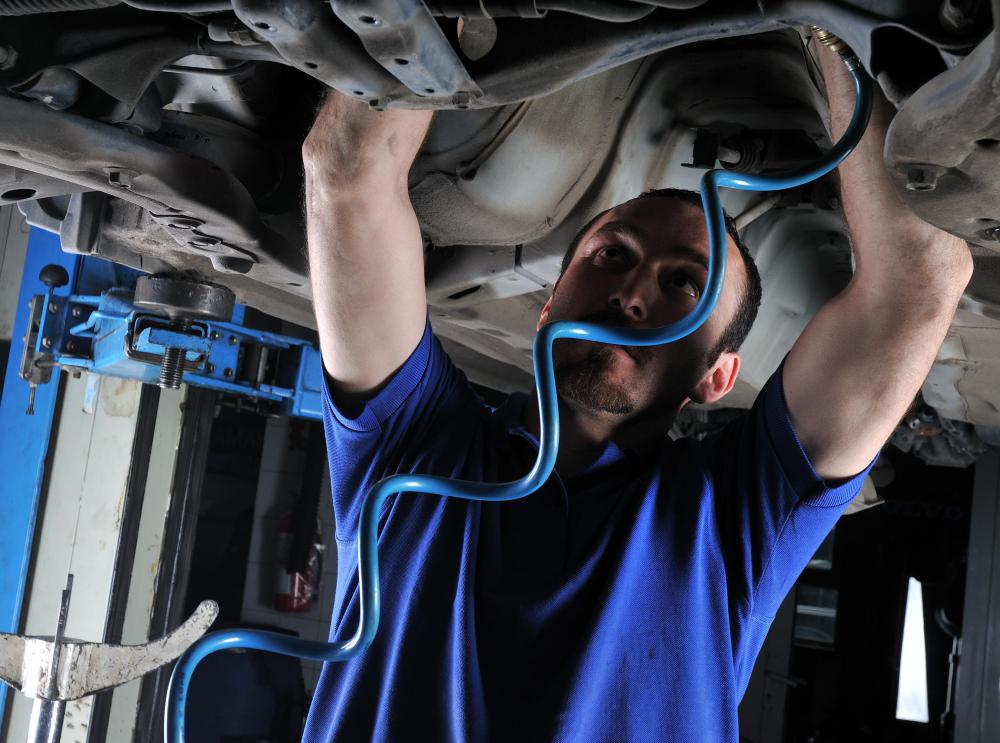At HomeQuestionsAnswered, we're committed to delivering accurate, trustworthy information. Our expert-authored content is rigorously fact-checked and sourced from credible authorities. Discover how we uphold the highest standards in providing you with reliable knowledge.
What is a Flexible Hose?
A flexible hose, usually just called a hose for short, is a type of piping that can transport a variety of liquids and gases through it to other locations. The most common hose used by home owners is the garden hose, sometimes called a hosepipe. A hose is created from a soft, plastic material. Rubber is one of the most common materials used to make hoses due to its flexible nature. Water flows through the garden hose from the source, often an outside spigot or faucet, to the end of the hose where it comes out either through the opening of the hose itself or through a hose attachment such as a spray nozzle.
Leather was used in the creation of the first type of flexible hose, but manufacturers soon switched to rubber and other synthetic materials. When a hose is made, the rubber is pushed or pulled through a small opening to shape the hose. This process, known as extrusion, can create hoses of various lengths and sizes. A hose can also be created by covering the material with a lead covering and treating it with sulfur at an extremely high temperature, a process known as vulcanization. The lead covering comes off after the treatment, and a strong flexible hose has been created.

When a flexible hose becomes too flexible, however, it won't stay open wide enough for the liquid or gas to pass through. To add just enough strength to the hose to make it functional, it is reinforced through a crisscrossed grid of fibers combined together through braiding, knitting, or spiraling. This process creates hoses that remain strong even at long lengths. Multiple hoses can be connected together when one hose is not long enough, and substances can still pass through the entire length without getting trapped.
Homeowners will find many advantages in the flexible hose, such as its ability to wind around trees or buildings. The hose is also strong enough to travel across rocks without tearing, and allows homeowners to easily transport water to hard-to-reach plants, to a car for washing, or around their house to clean the siding. The hose can be linked to a sprinkler system to water the entire lawn automatically, or set up to only water certain areas. Various attachments can alter the water pressure from a soft mist to a hard spray for dislodging tough dirt. Other attachments add a broom-like device to the end of the hose for cleaning and scrubbing down a driveway or sidewalk.
AS FEATURED ON:
AS FEATURED ON:











Discuss this Article
Post your comments